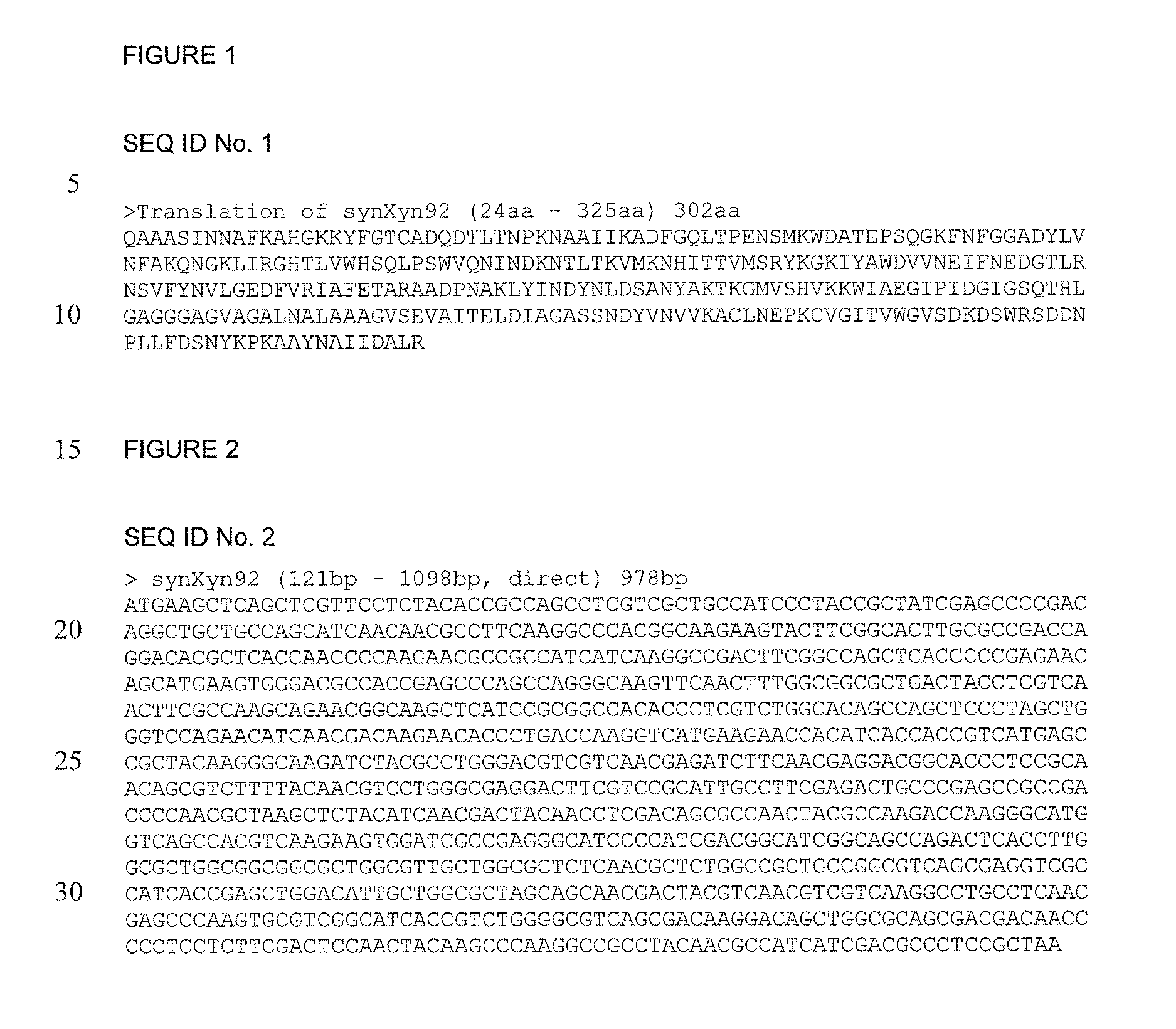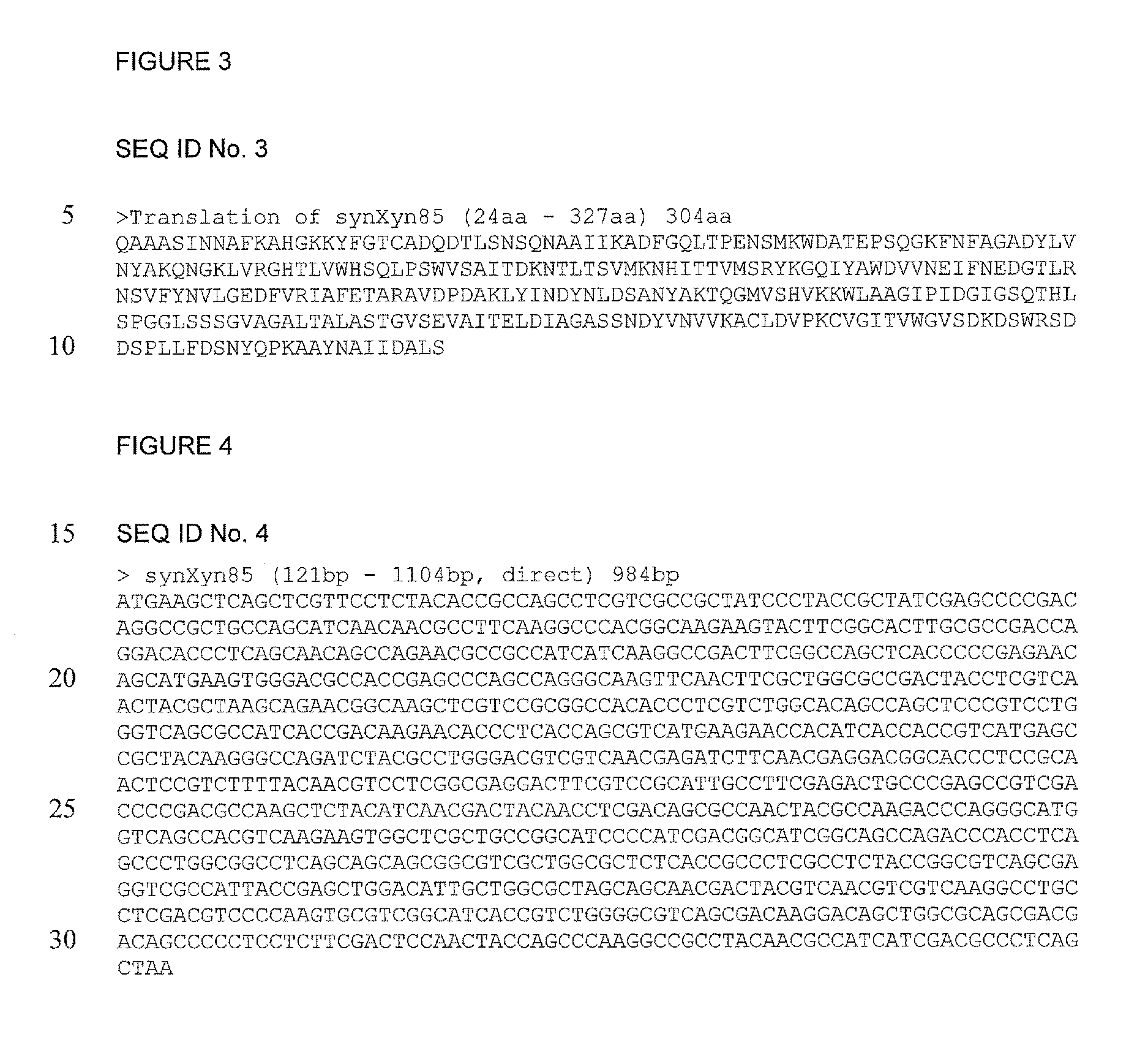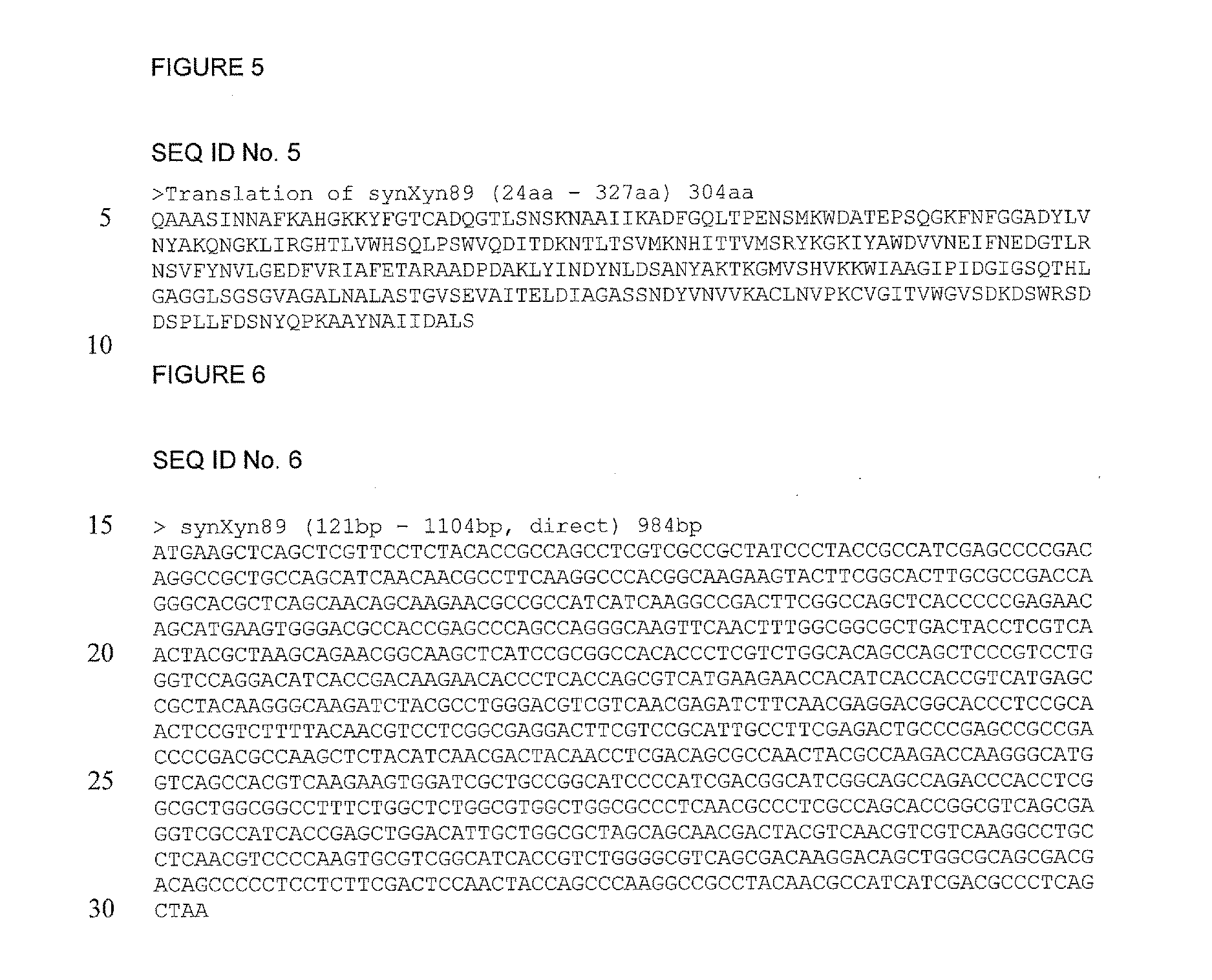Protein
a technology of synthetic xylanases and xylanases, which is applied in the field of new synthetic xylanases, can solve the problems of not being able to document the transformation of amino acid sequence differences into xylanases, and achieve the effects of reducing viscosity, efficient (and fast) degrading polymers and oligomers, and keeping viscosity low
- Summary
- Abstract
- Description
- Claims
- Application Information
AI Technical Summary
Benefits of technology
Problems solved by technology
Method used
Image
Examples
example 1
Generation of Synthetic Xylanases
[0767]Plasmid Construction
[0768]The genes encoding the synthetic xylanases shown as SEQ ID No. 2, 4, 6, 8, 10 and 12 were generated via a de novo gene synthesis (GeneArt GmbH, Germany). Synthetic xylanases were then cloned by the vendor into the destination vector pTTT-pyr2 via a Gateway recombination technique (Invitrogen, Carlsbad, Calif., USA). The resulting expression plasmids pTTTpyr2-synXyn_VAR (FIG. 13) expressing the synthetic xylanases were amplified in the Escherichia coli DH5a strain, purified, sequenced, arrayed individually in 96 MTPs and used for fungal transformation as described further. The expression vector contains the T. reesei cbhI promoter and terminator regions allowing for a strong inducible expression of a gene of interest, the Aspergillus nidulans amdS and T. reesei pyr2 selective markers conferring growth of transformants on minimal medium with acetamide in the absence of uridine. The plasmids are maintained autonomously in...
example 2
Synthetic Xylanase Performance
[0774]In addition to being good on bio-efficacy (e.g. have a positive effect on animal performance) new xylanase products for commercial use, e.g. for feed application also need to have good product characteristics including processing stability.
[0775]Synthetic polypeptides have been identified having xylanase activity. The synthetic polypeptides were found to be thermostable. The synthetic xylanases were found to have high recovery (residual activity) after undergoing the pelleting process. The synthetic xylanases were able to degrade WU-AX (water unextractable arabinoxylan) from DDGS (e.g. corn DDGS—and thus solubilize corn). Furthermore, the synthetic polypeptides were found to be resistant towards pepsin degradation.
[0776]The purpose of the synthetic xylanases in feed is to maximize energy utilization of a feedstuff by having more insoluble fibers digested and taken into solution, thereby make more nutrients available and thus producing more ferment...
example 3
Wheat Viscosity Reduction
[0849]In the European fuel alcohol industry, small grains like wheat, barley and rye are common raw materials, in contrast to the US where mainly corn is used. These small grains contain, next to starch, high levels of non-starch polysaccharide polymers (NSP), like cellulose, beta-glucan and hemicellulose.
[0850]The ratio in which the different NSPs are represented differ for each feedstock. Table 1 shows the different amounts of NSPs in wheat, barley and rye compared to some other feedstocks.
TABLE 1Non-starch Polysaccharides present in different feedstocks(g kg−1 dry matter)1,2BarleyOatsCornWheatRyeHulledHullessHulledHullessBeta-181642422841GlucanCellulose2217-2015-1643108214Soluble and7589-99116-136144114150113Non-soluble NCP3Total NSP97107-119132-1521861242321161Bach Knudsen, K. E, 1997. Carbohydrate and lignin contents of plant materials used in animal feeding. Anim. Feed Sci. Technol., 67 (4): 319-3382Englyst, H. N., Anderson, V. and Cummings, J. H., 198...
PUM
| Property | Measurement | Unit |
|---|---|---|
| pH | aaaaa | aaaaa |
| temperature | aaaaa | aaaaa |
| temperature | aaaaa | aaaaa |
Abstract
Description
Claims
Application Information
 Login to View More
Login to View More - R&D
- Intellectual Property
- Life Sciences
- Materials
- Tech Scout
- Unparalleled Data Quality
- Higher Quality Content
- 60% Fewer Hallucinations
Browse by: Latest US Patents, China's latest patents, Technical Efficacy Thesaurus, Application Domain, Technology Topic, Popular Technical Reports.
© 2025 PatSnap. All rights reserved.Legal|Privacy policy|Modern Slavery Act Transparency Statement|Sitemap|About US| Contact US: help@patsnap.com



